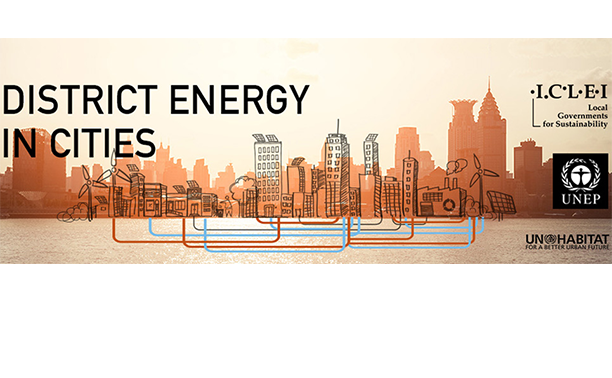
District Energy in cities
by Tim Willmott : Comments Off on District Energy in cities
A new report from UNEP has surveyed low-carbon cities worldwide to identify the key factors underlying their success in scaling up energy efficiency and renewable energy, as well as in attaining targets for zero or low greenhouse gas emissions. District energy systems (DES) emerged as a best practice approach for providing a local, affordable and sustainable energy supply, improve energy efficiency and support energy access efforts. They represented a significant opportunity for countries and cities around the world to move towards climate-resilient, resource-efficient and low-carbon pathways.
“District Energy in Cities: Unlocking the Potential of Energy Efficiency and Renewable Energy” is among the first publications to provide concrete policy, finance and technology best practice guidance on addressing the heating and cooling sectors in cities through energy-efficiency improvements and the integration of renewable energy technology. It provides a glimpse into what integration and systems thinking look like in practice when addressing challenges in the energy, transport, buildings and industry sectors.
- Paris has chosen DES as a core strategy for its pathway to a 75 per cent reduction in CO2 emissions by 2050; the city’s waste-to-energy plants alone avoid the emission of 800,000 tons of CO2 annually.
- Anshan, in Liaoning province, China, aims to reduce its use of heavily polluting coal by a projected 1.2 million tons annually through the pooling of separate networks and the capture of 1 gigawatt of waste heat from a steel plant in the city.
- In Dubai, district cooling can result in 50 per cent reductions in electricity use compared to other forms of cooling.
- Yerevan, Armenia, is retrofitting and modernizing its district heating systems, which historically had losses as high as 50 per cent. After the first phase of refurbishment, 10,000 residents were reconnected, reducing energy consumption by 50.2 GWh annually.
- St. Paul, Minnesota, uses DES fueled by municipal wood waste to displace 275,000 tons of coal annually and to keep US$12 million in energy expenses circulating in the local economy.
http://www.unep.org/energy/districtenergyincities



Comments are closed